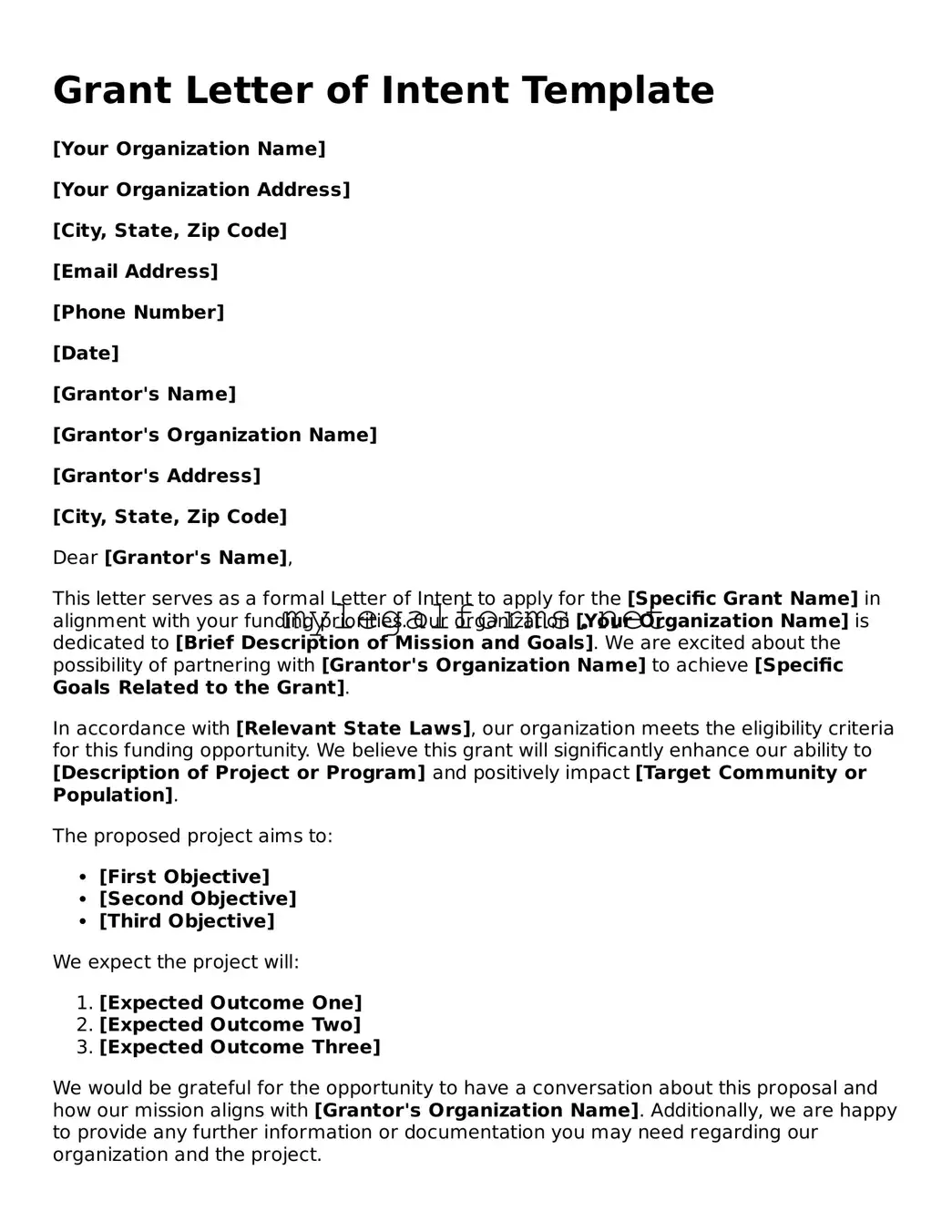Grant Letter of Intent Template
[Your Organization Name]
[Your Organization Address]
[City, State, Zip Code]
[Email Address]
[Phone Number]
[Date]
[Grantor's Name]
[Grantor's Organization Name]
[Grantor's Address]
[City, State, Zip Code]
Dear [Grantor's Name],
This letter serves as a formal Letter of Intent to apply for the [Specific Grant Name] in alignment with your funding priorities. Our organization [Your Organization Name] is dedicated to [Brief Description of Mission and Goals]. We are excited about the possibility of partnering with [Grantor's Organization Name] to achieve [Specific Goals Related to the Grant].
In accordance with [Relevant State Laws], our organization meets the eligibility criteria for this funding opportunity. We believe this grant will significantly enhance our ability to [Description of Project or Program] and positively impact [Target Community or Population].
The proposed project aims to:
- [First Objective]
- [Second Objective]
- [Third Objective]
We expect the project will:
- [Expected Outcome One]
- [Expected Outcome Two]
- [Expected Outcome Three]
We would be grateful for the opportunity to have a conversation about this proposal and how our mission aligns with [Grantor's Organization Name]. Additionally, we are happy to provide any further information or documentation you may need regarding our organization and the project.
Thank you for considering our Letter of Intent. We look forward to the possibility of working together to make a difference.
Sincerely,
[Your Name]
[Your Title]
